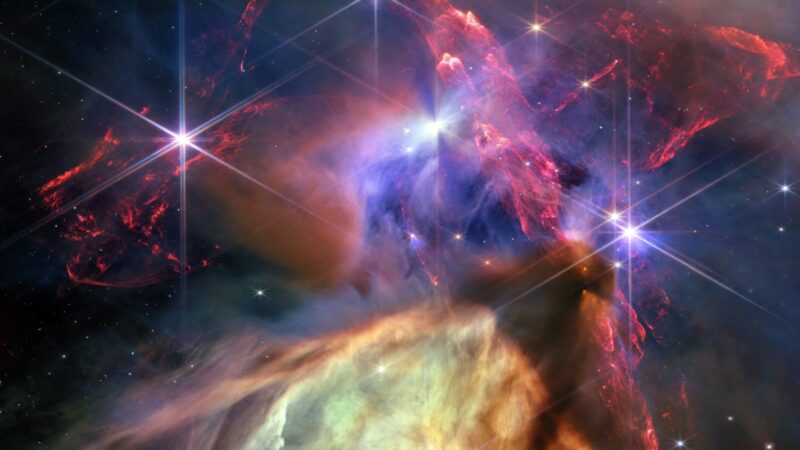[NTD Times, Beijing time, July 14, 2023] – In a groundbreaking discovery, NASA’s Webb telescope has captured stunning images of the birth of 50 stars located 390 light-years away from Earth. The telescope observed glowing gas, jets of hydrogen gas, and dense dust clouds near the border of the Scorpius constellation Ophiuchus, providing valuable insights into the process of star formation.
The recently released photos by NASA on July 12 showcase the birth of these dazzling stars, some of which are even larger than our own sun. Eric Smith, the NASA Webb Telescope Project Scientist, explained the significance of these images, stating that they resemble the material that existed billions of years ago during the formation of our solar system. The upper right of the photo displays a distinct red jet of hydrogen molecules being ejected from the forming stars, while the lower left exhibits glowing gas illuminated by other stars in the region.
What makes this discovery even more remarkable is the absence of any star blocking in front of the Webb telescope during the imaging process. As a result, an unprecedented level of detail has been captured, previously unseen by human eyes.
Scientists believe that in the shadows surrounding these newborn stars, the formation of planets is also taking place. This finding adds to our understanding of the complex processes involved in the creation of stellar systems.
The Webb telescope, currently the largest and most powerful astronomical telescope, has surpassed its predecessor, the Hubble telescope, which has been in orbit for 33 years. Placed at a higher orbit approximately 1.6 million kilometers away from Earth, the Webb telescope offers a wider scanning range, allowing scientists to explore space more extensively.
This significant achievement in astrophysics was made possible by the efforts and collaboration of NASA and its team of researchers. The breakthrough has generated excitement among the scientific community, opening up new avenues for exploration and deepening our understanding of the universe.
Ren Hao, reporting for NTDTV, contributed to this comprehensive report.
